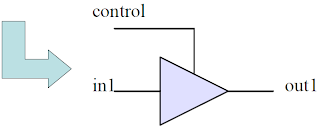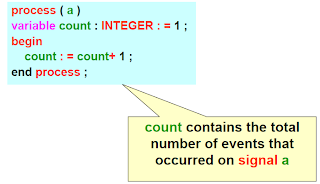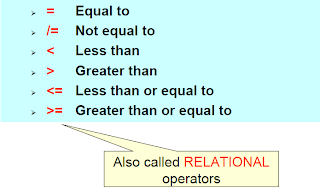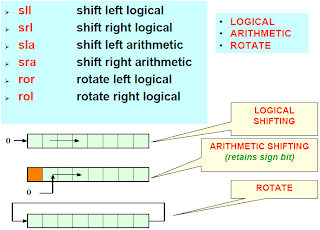• when … else
• with … select
NOTE: These constructs need not be in the process.
when…else
• A concurrent statement which assigns one of several expressions to a signal, depending on the values of Boolean conditions which are tested in sequence.
• Equivalent to a process containing an if statement.
Syntax
[Label:] Target <= [Options]
Expression [after TimeExpression] when Condition else
Expression [after TimeExpression] when Condition else
...
Expression [after TimeExpression] [when Condition];
Where to use ?
architecture – begin – HERE - end
block – begin – HERE - end
generate – begin – HERE - end
Rules:
• The reserved word guarded may only appear in a signal assignment within a guarded block. A guarded assignment only executes when the guard expression on the surrounding block is true.
• An Expression on the right hand side may be replaced by the reserved word “unaffected”.
Synthesis
• Conditional signal assignments are synthesized to combinational logic.
• The Expressions on the right hand side are multiplexed onto the Target signal.
• The resulting logic will be priority encoded, because the conditions are tested in sequence.
Remarks:
• Conditional and selected signal assignments are a concise way to describe combinational logic in Register Transfer Level descriptions, although processes can be easier to read and maintain in some cases.
• A conditional assignment is a neat way to convert from a Boolean condition to the type Std_logic.
Example
z <= a when s1=‘1’
else
b when s2=‘1’
else
c ;

Example (Tri-state Buffer)
architecture tri_buff of tri_buff_part is
begin
out1 <= in1 when control=‘1’
else
‘z’;
end tri_buff ;

information shared by www.irvs.info










































